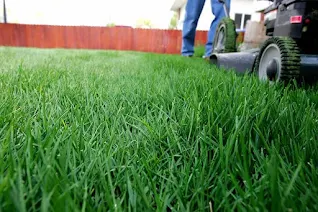When Does Grass Stop Growing?
When does grass stop growing. - In regions with cool-season turf, fall is the time when grass grows readily and quickly. Fall's cooler air and autumnal rains give lawns a jump start that sends them into rapid growth. To figure out when to stop cutting the grass, pay attention to these seasonal signals.
- Soil temperature- Soil temperature is a good indicator of when grass is about to go dormant. For cool-season grasses, the soil temp that triggers dormancy is 45 degrees F. You can track soil temps for your area online or observe grass growth.
- Leaves- Falling leaves signal the arrival of cooler air. Mulching with the mower is the easiest way to keep leaves off the lawn.
- Frost- Following a few hard touches of frost, warm-season grasses can go dormant. Cool-season lawns can keep growing and may still need mowing. Never mow a lawn when it’s covered in frost, though. It’s best to stay off frosty grass to protect turf crowns.
What makes grass grow?
- Number of available nutrients in your soil
- The kind of soil and its pH degree in your yard
- Presence of beneficial species vs rodents from the lawn
- The number of present weeds
- Your yard's slope and visibility
- Usage of proper methods of mowing and irrigation
- Places to use the yard, such as heavy foot traffic, athletics, leisure, etc.
Fall Mowing Plan
In regions where the snow flies, the goal is to leave grass as short as possible without scalping it. Gradually step down mower height through fall until you're cutting grass to that short length. With each mowing, remember not to remove more than one-third of the total blade length.
Ggrass Height for Winter
The best grass cutting length before winter is 2.5-3 inches. If you cut your blade too short, your lawn will go hungry in the winter, and you're likely to spend the spring recovering from shock.
Why Cut Grass Short?
Prevent disease - Long grass is more susceptible to winter fungal diseases known as snow mold, which can kill grass.
Deter voles - Long grass gives voles a place to hide from predators as they munch a ready food source: healthy grass plants and roots. If snow cover is absent, voles are less likely to venture into short grass, which provides no cover from cats, hawks, foxes, or owls. (read how to get rid of voles in your lawn)
Reduce winter kill - Longer grass is more likely to experience winter kill, especially when snow is present. The snow folds grass blades over the plant crown, which can lead to fungal disease and rot.
In spring, short grass offers several advantages:
Faster green-up - Short grass doesn’t shade the soil, allowing sunlight to reach the soil and warm it. This leads to earlier growth, also known as green-up.
Less debris - Most leaves skip across short lawns in winter winds, but get bogged down in tall grass.
Less snow mold - Snow mold can occur even in regions without significant snow cover. Winter rains can also mat long grass and allow this fungus to grow and harm grass. Short grass blades stand up to winter rain and snow.
When to stop mowing lawn in Win
The right time to stop mowing the lawn is when grass stops growing. You may still need to run the mower to mulch leaves on the lawn until as late as December, depending on the weather. An early snowfall that doesn’t stick around isn’t a signal to stop mowing. It all depends on grass growth and leaf cover on the lawn. A good rule of thumb is to keep mowing and mulching leaves until roughly 90 percent of them are down. At that point, drive your mower to the shed and give it some post-mowing-season TLC.
When does grass stop growing in the fall?
When temperatures fall below 50°F, grass goes dormant and stops growing for the season. This will be sometime between October and December, depending on where you live. Beginning a couple of weeks before the first frost, cut your grass increasingly shorter.
Fall lawn care is just as important as manicuring and watering it in the summer. In fall, you're preparing for a robust and healthy return in the spring. Knowing when to stop cutting your grass can make a significant difference in how quickly the green comes back.

